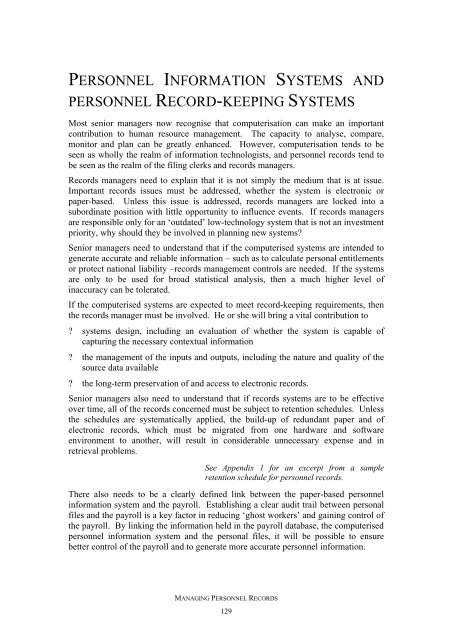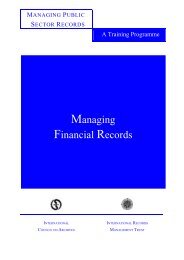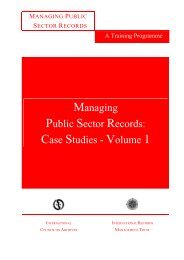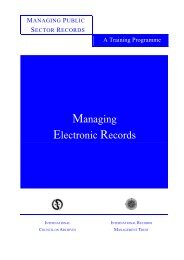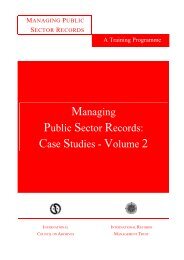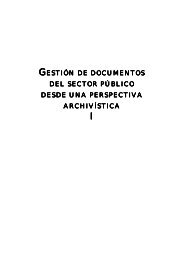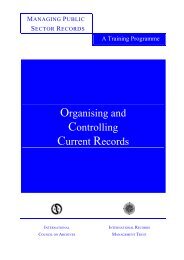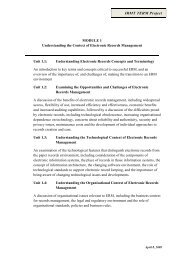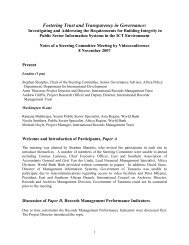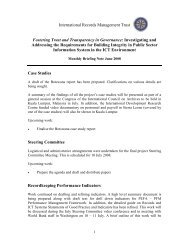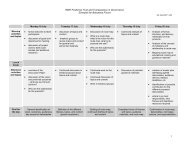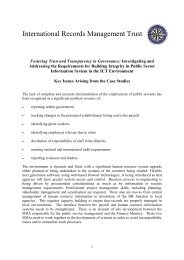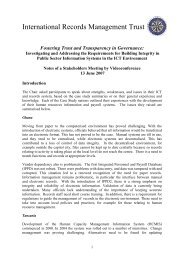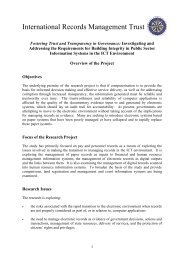Managing Personnel Records - International Records Management ...
Managing Personnel Records - International Records Management ...
Managing Personnel Records - International Records Management ...
Create successful ePaper yourself
Turn your PDF publications into a flip-book with our unique Google optimized e-Paper software.
PERSONNEL INFORMATION SYSTEMS AND<br />
PERSONNEL RECORD-KEEPING SYSTEMS<br />
Most senior managers now recognise that computerisation can make an important<br />
contribution to human resource management. The capacity to analyse, compare,<br />
monitor and plan can be greatly enhanced. However, computerisation tends to be<br />
seen as wholly the realm of information technologists, and personnel records tend to<br />
be seen as the realm of the filing clerks and records managers.<br />
<strong>Records</strong> managers need to explain that it is not simply the medium that is at issue.<br />
Important records issues must be addressed, whether the system is electronic or<br />
paper-based. Unless this issue is addressed, records managers are locked into a<br />
subordinate position with little opportunity to influence events. If records managers<br />
are responsible only for an ‘outdated’ low-technology system that is not an investment<br />
priority, why should they be involved in planning new systems?<br />
Senior managers need to understand that if the computerised systems are intended to<br />
generate accurate and reliable information – such as to calculate personal entitlements<br />
or protect national liability –records management controls are needed. If the systems<br />
are only to be used for broad statistical analysis, then a much higher level of<br />
inaccuracy can be tolerated.<br />
If the computerised systems are expected to meet record-keeping requirements, then<br />
the records manager must be involved. He or she will bring a vital contribution to<br />
? systems design, including an evaluation of whether the system is capable of<br />
capturing the necessary contextual information<br />
? the management of the inputs and outputs, including the nature and quality of the<br />
source data available<br />
? the long-term preservation of and access to electronic records.<br />
Senior managers also need to understand that if records systems are to be effective<br />
over time, all of the records concerned must be subject to retention schedules. Unless<br />
the schedules are systematically applied, the build-up of redundant paper and of<br />
electronic records, which must be migrated from one hardware and software<br />
environment to another, will result in considerable unnecessary expense and in<br />
retrieval problems.<br />
See Appendix 1 for an excerpt from a sample<br />
retention schedule for personnel records.<br />
There also needs to be a clearly defined link between the paper-based personnel<br />
information system and the payroll. Establishing a clear audit trail between personal<br />
files and the payroll is a key factor in reducing ‘ghost workers’ and gaining control of<br />
the payroll. By linking the information held in the payroll database, the computerised<br />
personnel information system and the personal files, it will be possible to ensure<br />
better control of the payroll and to generate more accurate personnel information.<br />
MANAGING PERSONNEL RECORDS<br />
129


